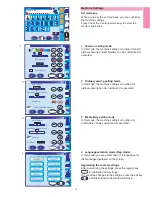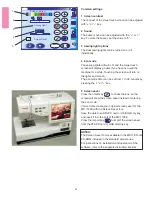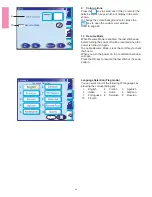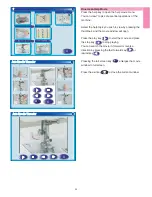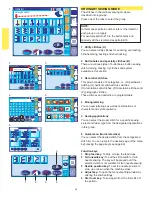
33
Variety of overcasting stitches
U9 Multiple zigzag stitch (tricot stitch):
Zigzag foot A
This stitch is used to finish a raw edge of synthetics and
other stretch fabrics that tend to pucker.
Sew along the fabric edge leaving an adequate seam
allowance. After sewing, trim off the seam allowance
closer to the stitches.
U10 Overcasting stitch:
Overedge foot C
This stitch can be used to simultaneously seam and
overcast edges of fabrics.
Use this stitch when you do not need to open seams
flat.
Place the fabric edge next to the guide of the foot and
then sew.
U11 Knit stitch:
Zigzag foot A
This stitch is recommended for sewing such fabrics as
synthetic knits and stretch velour as it provides the
greatest amount of elasticity and strength.
Sew along the fabric edge leaving an adequate seam
allowance.
After sewing, trim the seam allowance close to the
stitches.
U12 Double overedge stitch:
Overedge foot C
This stitch is excellent for fabrics that tend to fray
extensively such as linens and gabardines.
Two rows of zigzag stitches are simultaneously sewn
over the edge to insure that the fabric will not ravel.
U13 Overlock stitch:
Overcasting foot M
This stitch finishes the edges of fabric similar to a
commercial overlocking machine for a professional
look. The stitch width cannot be adjusted.
CAUTION:
When you use overedge foot C or overcasting foot M,
you must set the zigzag width at 5.0 or wider to prevent
the needle from hitting the foot wires.
U9
U10
U11
U12
U13

